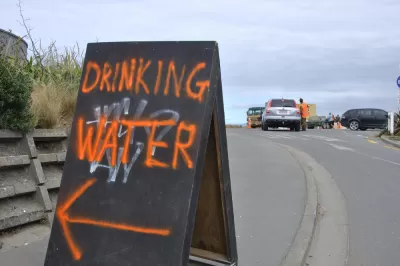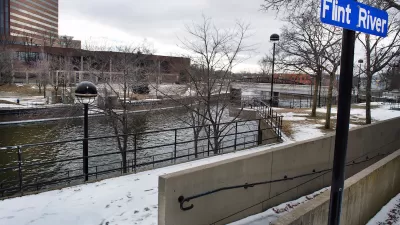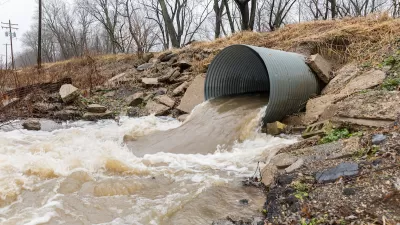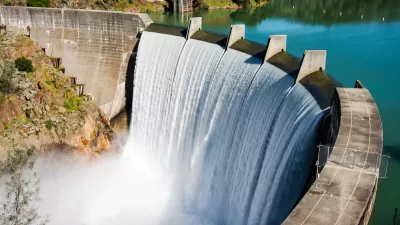Water bills are going up because pipes put in shortly after World War II are in need of repair and replacement all over the country, and federal funding for water is shrinking.

Water has become more expensive in recent years and that is not likely to stop anytime soon,"Water prices will have to increase by 41 percent in the next five years to cover the costs of replacing aging water infrastructure and adapting to climate change," Sarah Frostenson reports in Vox. Not only because of lead leaching into water and the growing evidence of the health dangers of that contamination, but also because in many cases water costs are growing faster than wages and have been for decades. Many associate the need for new water infrastructure with Flint, Michigan, a community that is still dealing with a contaminated water crisis, but states like Mississippi, Louisiana, Alabama, Kentucky, and Arkansas are especially vulnerable because of their poor populations will be hit hard by rising costs.
"After World War II, America went on something of an infrastructure kick, building an expansive network of water pipes in cities across the country. But now these pipes are more than 60 years old and in many instances are in desperate need of repair," Frostenson reports.
FULL STORY: America has a water crisis no one is talking about

Alabama: Trump Terminates Settlements for Black Communities Harmed By Raw Sewage
Trump deemed the landmark civil rights agreement “illegal DEI and environmental justice policy.”

Study: Maui’s Plan to Convert Vacation Rentals to Long-Term Housing Could Cause Nearly $1 Billion Economic Loss
The plan would reduce visitor accommodation by 25% resulting in 1,900 jobs lost.

Why Should We Subsidize Public Transportation?
Many public transit agencies face financial stress due to rising costs, declining fare revenue, and declining subsidies. Transit advocates must provide a strong business case for increasing public transit funding.

Paris Bike Boom Leads to Steep Drop in Air Pollution
The French city’s air quality has improved dramatically in the past 20 years, coinciding with a growth in cycling.

Why Housing Costs More to Build in California Than in Texas
Hard costs like labor and materials combined with ‘soft’ costs such as permitting make building in the San Francisco Bay Area almost three times as costly as in Texas cities.

San Diego County Sees a Rise in Urban Coyotes
San Diego County experiences a rise in urban coyotes, as sightings become prevalent throughout its urban neighbourhoods and surrounding areas.
Urban Design for Planners 1: Software Tools
This six-course series explores essential urban design concepts using open source software and equips planners with the tools they need to participate fully in the urban design process.
Planning for Universal Design
Learn the tools for implementing Universal Design in planning regulations.
Smith Gee Studio
Alamo Area Metropolitan Planning Organization
City of Santa Clarita
Institute for Housing and Urban Development Studies (IHS)
City of Grandview
Harvard GSD Executive Education
Toledo-Lucas County Plan Commissions
Salt Lake City
NYU Wagner Graduate School of Public Service





























